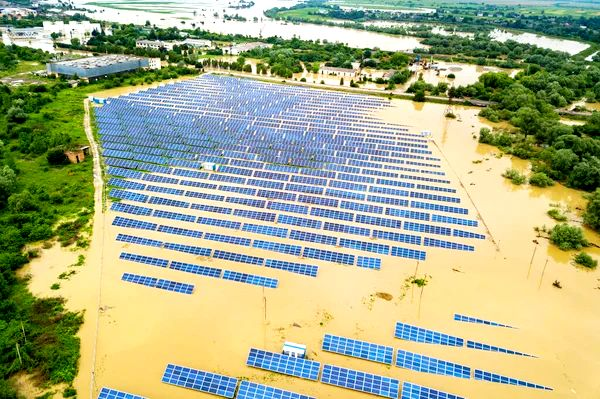The Importance of Flood Modelling for Solar Plants
- Home
- Blogs
Get Free Expert Assistance
The Importance of Flood Modelling for Solar Plants: A Sustainable Investment with Environmental Benefits

As the world embraces renewable energy, solar plants have emerged as a cornerstone of sustainable development. However, these facilities are not immune to environmental challenges, particularly those posed by flooding. Effective flood modelling is essential to ensure the resilience and longevity of solar plants. Leveraging advanced tools like HEC-RAS, hydrological and hydrodynamic modelling, and geotechnical assessments, developers can safeguard solar infrastructure while maintaining their role as an Environmental Saviour.
Why Solar Plants Need Flood Modelling
Solar plants are often located in vast, open areas, which can sometimes coincide with flood-prone regions. Flooding can result in:
- 1. Damage to solar panels and electrical equipment.
- 2. Soil erosion undermining the foundation of structures.
- 3. Disruptions in energy production, leading to financial losses.
To mitigate these risks, flood risk assessments are crucial during the planning and operational phases of solar plant projects.
How Flood Modelling Works
Flood modelling involves the use of sophisticated software and techniques to predict water flow and flooding scenarios. A multidisciplinary approach that combines statistical and research skills, programming expertise, and a geographical background is necessary to develop accurate models.
- 1. Hydrological Modelling: Assessing precipitation, runoff, and soil absorption to determine potential water accumulation.
- 2. Hydrodynamic Modelling: Simulating water flow using tools like HEC-RAS to predict flood extents, depths, and velocities.
- 3. Geotechnical Assessment: Evaluating soil stability to design retaining structures and mitigate erosion.
The Bhoojal Survey Case Study
The Bhoojal Survey team exemplifies the effectiveness of comprehensive flood modelling and groundwater assessment. For a solar plant project in a flood-prone region, Bhoojal’s experts conducted a detailed study encompassing flood risk, hydrology, and geotechnical stability.
Steps Taken by Bhoojal Survey
- 1. Hydrological and Hydrodynamic Modelling: Using tools like HEC-RAS, the team simulated potential flood scenarios to identify vulnerable areas. This helped in designing site-specific river training works to manage water flow.
- 2. Groundwater Assessment: Understanding the groundwater levels was crucial for ensuring the stability of foundations. The survey revealed zones with high water tables, prompting the installation of retaining structures to prevent seepage and erosion.
- 3. Mapping and Data Analysis: Advanced GIS-based mapping provided a detailed visualization of flood risks, enabling precise planning and layout adjustments.
- 4. Geotechnical and Structural Insights: The team assessed soil conditions to recommend foundation designs that could withstand potential flooding events.
Outcome: The insights from the Bhoojal Survey helped the developers implement smart drainage systems, fortify infrastructure against flooding, and maintain environmental sustainability.
The Role of Mapping and Data Analysis
Advanced mapping techniques provide a visual representation of flood risks, enabling developers to identify vulnerable areas. With GIS-based tools, engineers can create detailed maps that integrate topography, land use, and climate data. This helps in designing effective river training works to redirect or manage water flow.
Statistical and research skills are crucial for analyzing historical flood data and predicting future trends. By combining past data with modern predictive models, developers can make informed decisions about site selection and protective measures.
Benefits of Flood Modelling for Solar Plants
- 1. Enhanced Safety: Protects infrastructure and ensures uninterrupted energy production.
- 2. Environmental Preservation: Prevents unintended impacts on surrounding ecosystems, aligning with the goal of being an Environmental Saviour.
- 3. Cost Efficiency: Reduces repair and maintenance costs by mitigating potential flood damages.
- 4. Compliance: Ensures adherence to regulatory standards, particularly in flood-prone regions.
Conclusion
Investing in flood modelling for solar plants is not just a precautionary measure—it’s a commitment to sustainable and resilient energy infrastructure. With the integration of programming skills, geographical insights, and advanced tools like HEC-RAS, developers can achieve robust flood risk assessments and ensure the long-term viability of solar installations.
The success of the Bhoojal Survey highlights how meticulous planning and execution can help solar plants thrive even in challenging environments. By combining hydrological and hydrodynamic modelling, geotechnical assessments, and modern engineering techniques, solar plants can truly become the Environmental Saviours they are meant to be.
